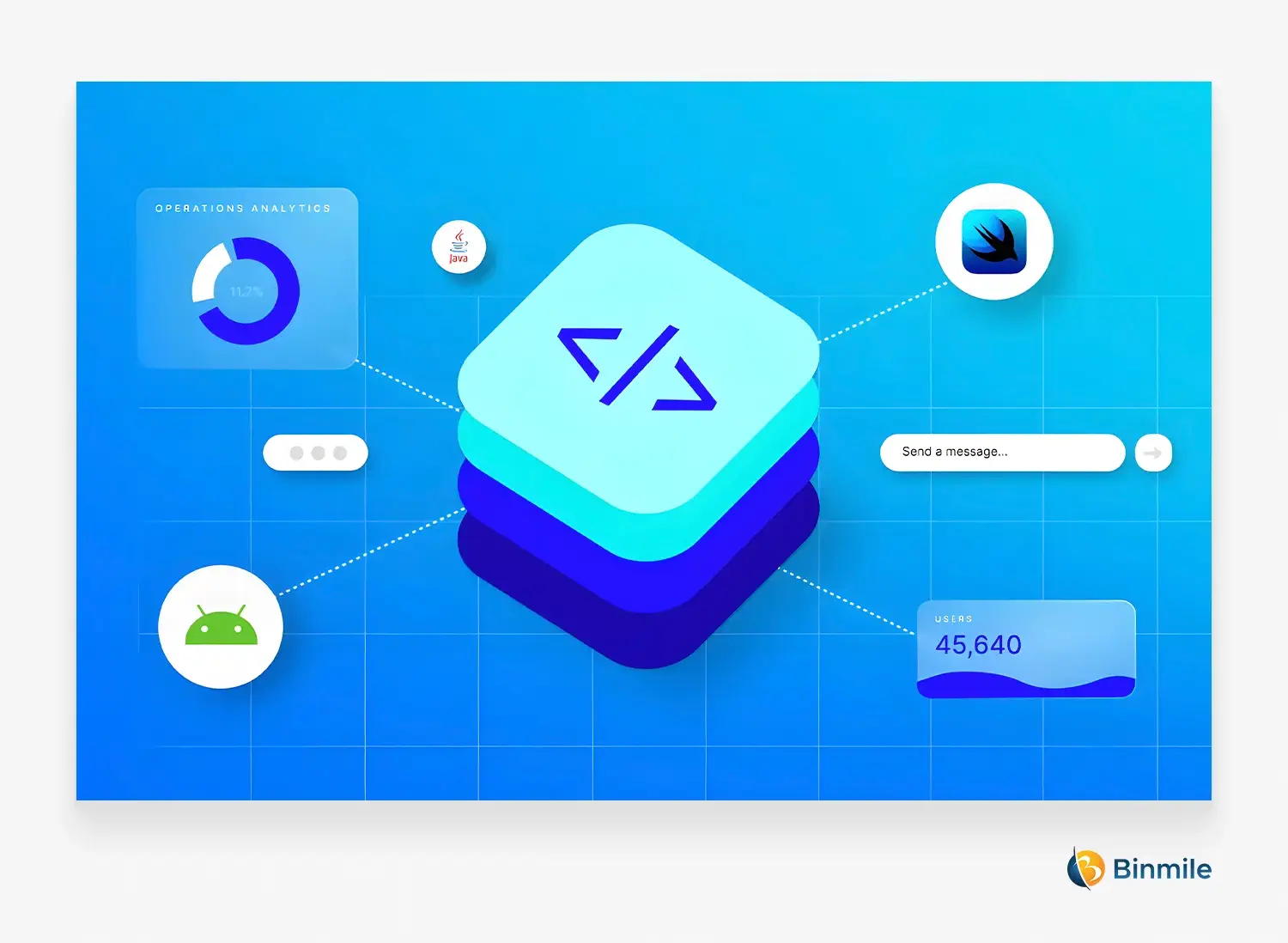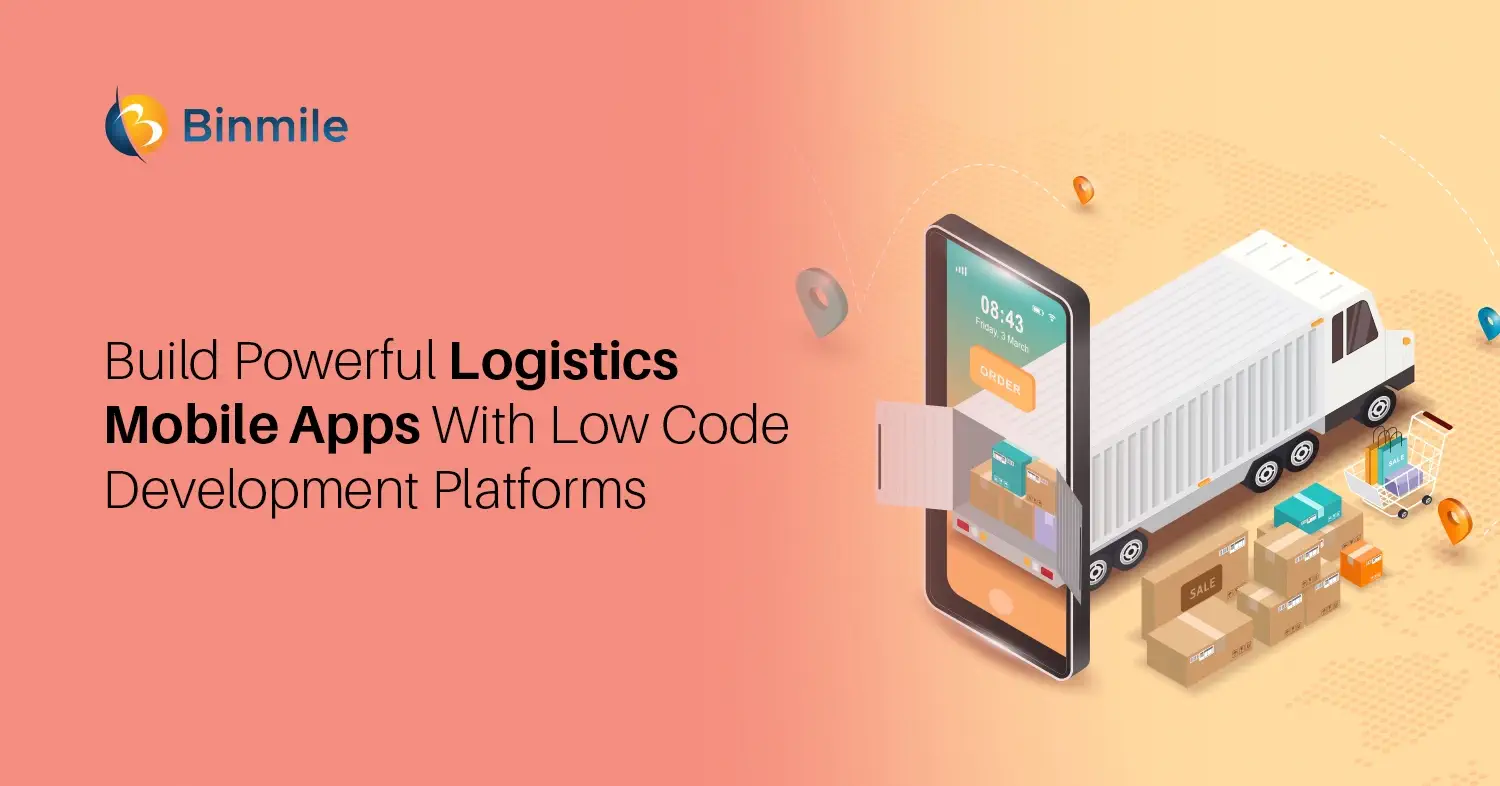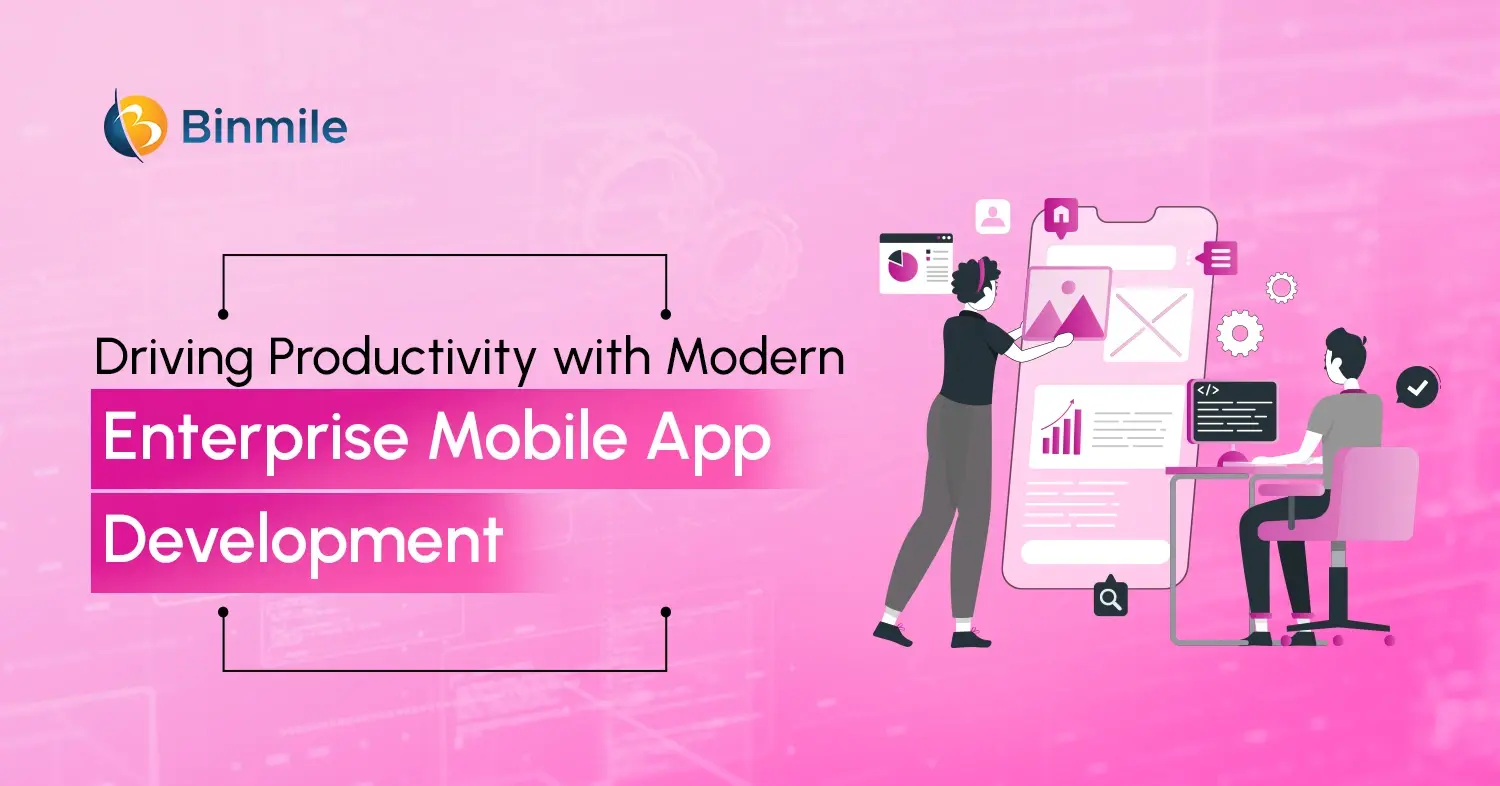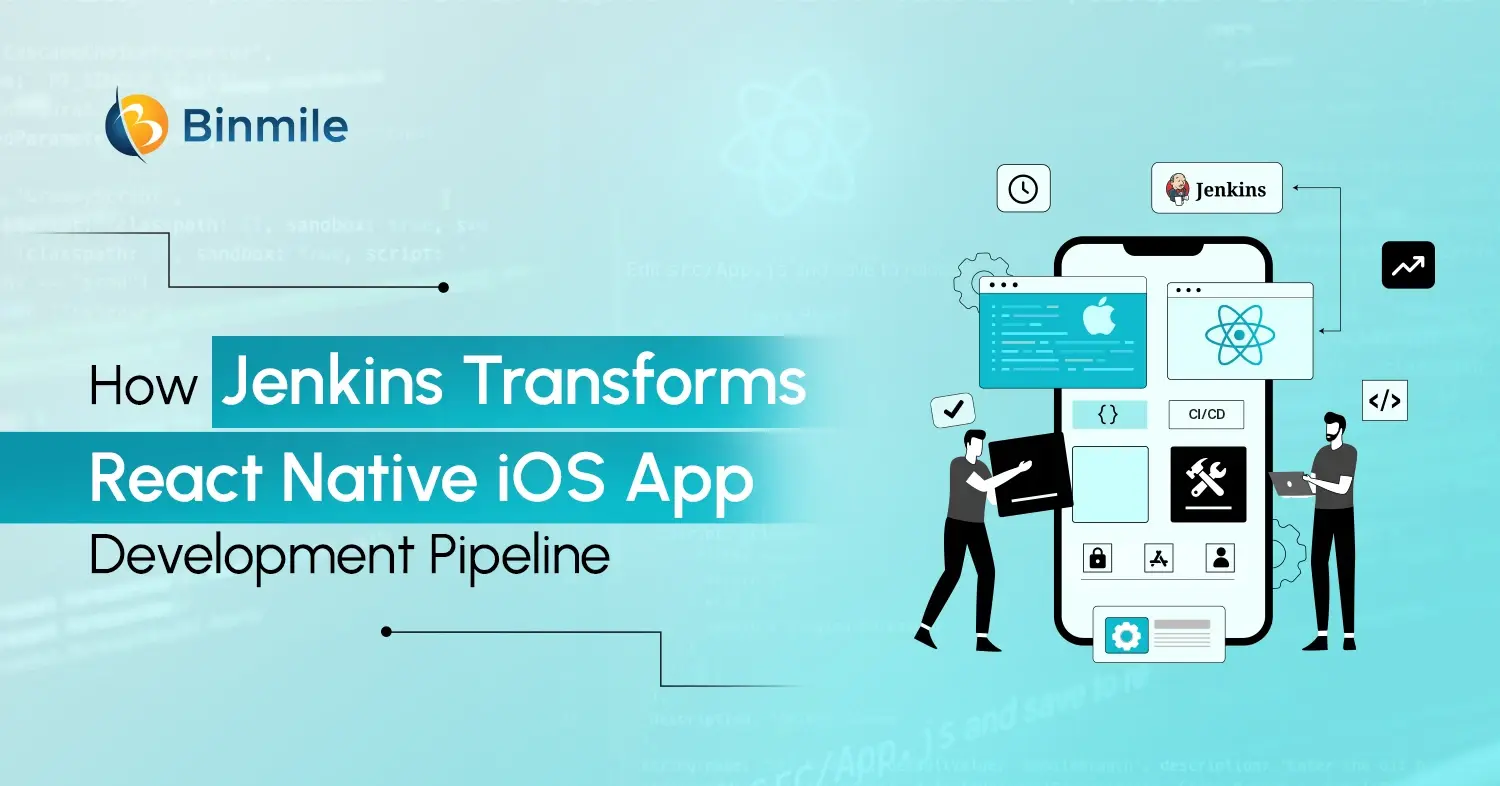- benefits of Building Logistics apps using low code development
- build powerful logistics mobile apps?
- cost of developing Logistics apps using low code development
- Factors That Impact Logistics Mobile Apps Development Cost
- features to be added in Logistics apps using low code development
- Guide to Build Logistics apps using low code development
- low code logistics app development process
- Steps to Building Logistics Mobile Apps Using Low Code Development
- What are the best practices for effective logistics app development?
To ensure efficient and streamlined supply chain management, logistics companies need software or apps that are flexible and make better use of their data to plan routes and shipments more efficiently. In addition, these apps must be an investment to meet changing consumer behavior and purchasing choices, and modernize your SCM processes, and not an expense. Building low-code Logistics mobile apps will significantly increase speed while reducing costs. Low-code brings a multitude of benefits to logistics companies: to streamline and automate processes, reduce internal bottlenecks, and build custom applications to service unique needs.
Additionally, moving to low code development platforms not only aligns supply chain software with your business’s need for innovation but also lets you adapt to the market faster, and deliver maximum benefits with minimum disruption and costs. Further, low-code development has brought a paradigm shift in software development services. It has simplified the development process by providing visual interfaces and pre-built components and enables users, regardless of coding expertise, to quickly and effortlessly create applications. So, how can logistics providers leverage this to build powerful logistics mobile apps? What are the best practices for effective logistics app development? Let’s discuss this with this comprehensive guide!
Steps to Building Logistics Mobile Apps Using Low Code Development: Guide, Benefits, Features & Costs

With the added benefit of a low-code development platform in building logistics mobile apps, businesses get a streamlined, simple, and yet efficient solution without extensive coding knowledge. Thus low-code logistics apps not only transform the logistics landscape but also foster agility and innovation within the industry. Let’s understand the process of developing logistics apps with low-code development platforms:
1. Define Your Objectives
Know what your logistics app specifically needs to solve so that you can define the right objective and functionalities of your project scope. Thorough research of your project or market will also enable you to determine potential pain points and define specific targets. Besides, it allows you and your employees to use this app to align with both business strategy and professional requirements. Also, you should consider MVP development services for your app’s idea which will take a little cost and time before being launched in the market.
2. Which Low-Code Platform Should You Choose?
Do not choose any of the low-code development platforms without considering some aspects like cost, features, or scalability before deciding. It’s important to consider factors such as pre-built components, integration capabilities, scalability, and user support to make the right choice. Therefore, you should choose a platform that understands your targeted segment, has the features that you would like to provide, and supports future enhancements in its structure.
3. Design User-Friendly Interfaces
The success or otherwise of an application depends on how intuitive the interface is adopted. Ensure user experience with designs that are simple, convenient, secure, and have minimum complex navigation. Additionally, this will make it easy for the users to work on your app, and attract and hold the users to have a better stand in the market.
4. Ensure Testing and Quality Assurance
Carry out extensive software testing at every phase of SDLC to detect probable functionality/usability/security flaws. In addition, gather valuable feedback on these aspects and implement insight to make necessary adjustments. This helps you improve the overall user experience modernization and prevent costly downtime.
5. Prioritize Security & Data Privacy
Robust security measures including secure authentication protocols, encrypted data, and a strong data security policy ensure that users’ information and business-critical data maintain its integrity and build customer loyalty. Therefore, make sure that you can timely identify potential vulnerable areas, and mitigate them before they can do financial or reputational damages.
6. Integrate Data Sources
Integrating seamlessly into the existing databases/APIs, other relevant trackers, and monitoring systems gives you a window into users’ behavior, process visibility, process enhancement, and supply chain optimization. Further, it strengthens your logistics management system to enable smart decision-making, as a result, it will become more efficient, lower down costs, and upgrade performance.
7. Regular Maintenance & Monitoring
Monitoring should be done periodically to ensure user experience enhancement, reduce unnecessary breakdowns, and boost productivity. Additionally, update the app with the latest software development trends, new features, and improvements. Doing so helps you ensure your logistics mobile app is successful in the long term and caters to users’ needs without breaking the bank.
Also Read: Logistics and Supply Chain Trends
How Much Does It Cost To Build A Logistics App

There is no specific answer to this question as multiple factors determine the logistics development cost. To give an estimated range, the logistics app development cost will range between $150,000 – $250,000 (or more with advanced features).
Types Of Logistics Apps
- Supply Chain Management
- Fleet Management
- Tracking GPS Apps
- Delivery drivers Apps
- Warehouse Management
Factors That Impact Logistics Mobile Apps Development Cost
In addition, here are the following factors that can impact logistics mobile app creation cost:
- Complexity of the app’s features: cost goes up with how complex the app’s features are. In addition to that, maintenance of such apps will add to the overall cost of app development.
- Development time: The longer the development time, the more costly it becomes to build.
- Technology stack: What kind of technology is being used to develop the app also affects the logistics of mobile app creation cost. For instance, AI in inventory management can be a little heavier on your pocket.
- Design requirements: For more intricate or complex design requirements, more expenses you need to incur to develop the app.
- Development team’s location: Depending on where the development is located and the standard of living also influence the development cost.
- Security features: The higher the level of security required, the more expensive it will be to build the app.
Read Further: Benefits of ERP in Supply Chain Management Software
Benefits of Low-Code Logistics Mobile Apps
- Low-code logistics app’s easy-to-use interface not only simplifies tasks but also engages customers and boosts the company’s reputation.
- It automates many processes, and users can speed up the workflow, optimize multiple processes, and improve productivity throughout your business.
- GPS-empowered logistic operations offer all user personas an array of benefits with unparalleled control and insight into the movement of their shipments.
- Data-driven information enables the business to gain insight into demand patterns, resource allocation, and cost management to help them identify trends, bottlenecks, and areas for improvement.
Talk to us today about how our cross-platform mobile app development services can transform your supply chain, boost your business, and give you a competitive edge.
Wrapping Up
Today’s hyper-connected world has turned modern supply chains into complex and multi-level networks. Therefore fast and agile development is the need of the hour for a company’s growth and digital transformation, making low-code and supply chains a perfect match. Moreover, logistics companies that look to improve the resilience of their software, affordable and swift react to dynamic environments; low code development platforms are a crowd-favorite.
However, to harness the power of low-code development platforms to build logistics mobile apps businesses must adopt the right practices. This will enable them to gain limitless functionality to experiment and design a solution that not only meets but exceeds the demands of your industry. Hopefully, this blog has helped you understand the dynamic landscape of low-code software development in building logistics apps, along with its benefits. In addition, seeking assistance from a logistics & transportation software development company not only lets you build powerful digital solutions but helps you remain sustainable and viable in the extremely demanding supply chain ecosystem.









